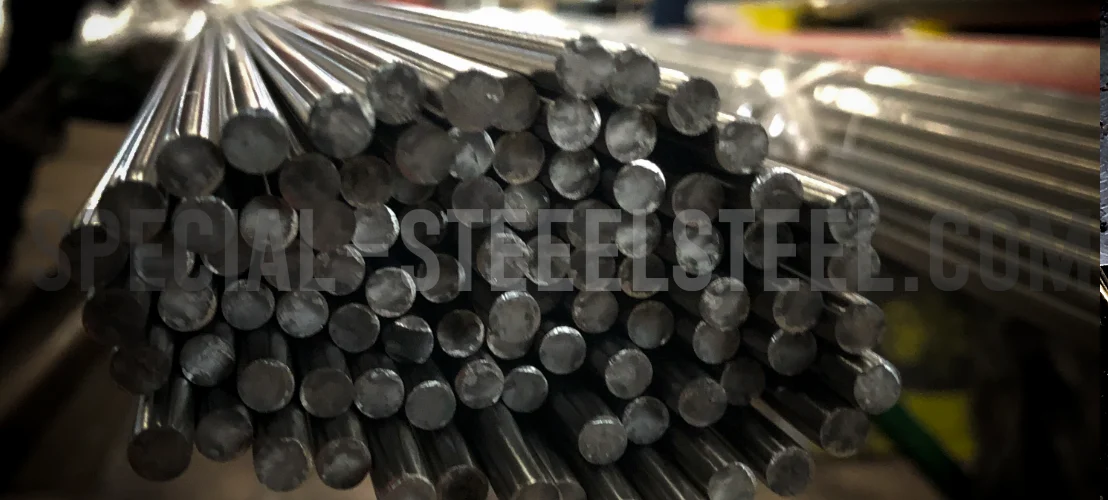20Х12ВНМФ, ЭП428
20Х12ВНМФ (ЭП428) is a martensitic heat-resistant steel developed in Russia for high-temperature applications (up to 600–650°C). It is widely used in power generation, gas turbines, and aerospace due to its creep resistance, high strength, and oxidation resistance.

Table of Contents
What is 20Х12ВНМФ, ЭП428?
20Х12ВНМФ (ЭП428) is a martensitic heat-resistant steel developed in Russia for high-temperature applications (up to 600–650°C). It is widely used in power generation, gas turbines, and aerospace due to its creep resistance, high strength, and oxidation resistance.
International Equivalents
| Country | Standard | Equivalent Grade |
|---|---|---|
| USA | ASTM A565 | AISI 422 |
| EU | EN 10095 | DIN X20CrMoV12-1 |
| Japan | JIS G4311 | SUH 600 |
| China | GB/T 1221 | 1Cr12WMoV |
Applications
- Power Plants: Turbine blades, rotors, bolts.
- Aerospace: Jet engine components.
- Oil & Gas: High-pressure valve parts.
Chemical Composition (%)
| Element | 20Х12ВНМФ, ЭП428 |
AISI 422 |
X20CrMoV12-1 |
SUH 616 |
|---|---|---|---|---|
| C | 0.17–0.23 | 0.20–0.25 | 0.17–0.23 | 0.15–0.25 |
| Cr | 11.0–13.0 | 11.0–13.0 | 10.0–12.5 | 10.0–13.0 |
| Ni | 0.50–0.90 | 0.50–1.00 | 0.30–0.80 | ≤1.00 |
| Mo | 0.70–1.00 | 0.75–1.25 | 0.80–1.20 | 0.80–1.20 |
| V | 0.20–0.40 | 0.20–0.40 | 0.25–0.35 | 0.20–0.40 |
| W | 0.70–1.10 | – | – | – |
| Mn | 0.50–0.90 | ≤1.00 | 0.30–0.80 | ≤1.00 |
| Si | 0.30–0.60 | ≤0.75 | 0.15–0.50 | ≤0.75 |
Key Features:
- High Cr (11–13%) provides oxidation resistance at high temperatures.
- Mo & V enhance creep strength by forming stable carbides.
- W (Tungsten) in 20Х12ВНМФ improves hot hardness (unique to Russian grade).
Material Properties
Room Temperature (Delivery Conditions: +A, +QT, +HT)
| Condition | σₓ (MPa) | σ₀.₂ (MPa) | δ (%) | HB | Impact (J) |
|---|---|---|---|---|---|
| Annealed (+A) | 650–850 | ≥490 | ≥15 | 200–250 | ≥40 |
| Quenched & Tempered (+QT) | 880–1080 | ≥735 | ≥12 | 270–330 | ≥30 |
High-Temperature Strength (500–650°C)
| Temp (°C) | σₓ (MPa) | Creep Limit (10⁵ h, MPa) |
|---|---|---|
| 550 | 550–650 | 120–150 |
| 600 | 450–550 | 80–100 |
| 650 | 350–450 | 40–60 |
Physical Properties
| Property | Value |
|---|---|
| Density (g/cm³) | 7.8 |
| Melting Point (°C) | 1450–1500 |
| Thermal Conductivity (W/m·K) | 26.0 (20°C), 28.5 (600°C) |
| Coefficient of Expansion (10⁻⁶/K) | 11.5 (20–600°C) |
Heat Treatment
- Annealing (A): 850–900°C → slow cooling (for machinability).
- Quenching (Q): 1000–1050°C → oil/air cooling.
- Tempering (T):
- Standard Tempering: 650–700°C → air (for balanced strength/toughness).
- High-Temperature Tempering: 720–780°C → improved ductility.
Processing Performance
Machining
- Pre-annealing recommended for better machinability.
- Carbide tools preferred due to high hardness.
Welding
- Preheating: 250–300°C (to avoid cracking).
- Post-Weld Heat Treatment (PWHT): 700–750°C → slow cooling.
- Filler Metals: Matching electrodes (e.g., ЦЛ-17 in Russian standards).